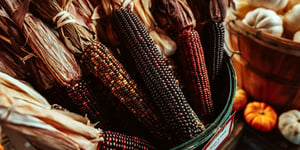“Ever since the creation of the world, [God’s] invisible attributes of eternal power and divinity have been able to be understood and perceived in what he has made...”
—Romans 1:20
Since the beginning of civilization, human beings appear to have shared a mysterious awareness that their world, their resources, and even their bodies have been given to them by Something—or Someone—Else. There seems to be a universal sense of a higher power that oversees the material world. Twentieth-century historians and anthropologists have used the term “homo religiosus” to evoke this human quality. Humankind (“homo”) seems to be intrinsically religious (“religiosus”), and this separates humans from other kinds of earthly creatures. Humans seem uniquely attuned to an immaterial “Other” to whom we owe gratitude, whose approval we crave, and whose justice we seek. Indeed, much of human culture before modern times, including major monuments, precious artifacts, and rich cultural traditions, was crafted in response to this spiritual awareness.
Harvest Festivals across Time and Space beyond Thanksgiving
One way that humankind has perennially expressed its intuition of a higher power—a sort of celestial benefactor or creator—is through the global, millennia-old tradition of the harvest festival. The American holiday of Thanksgiving is only a very recent addition to a host of much earlier sacred traditions harking back to the dawn of history.
The basic techniques of agriculture seem to have first been discovered in the area we call the “Fertile Crescent” of Mesopotamia, and this knowledge spread, or was independently derived, in many other parts of the world soon after. Historians call this era the “Neolithic Period,” or the “New Stone Age,” and it is marked both by the development of stable settlements, farmlands, and architecture and by elaborate rituals of thanksgiving at harvest time.
One example of this “thanksgiving” phenomenon, the Chinese Moon Festival, has been celebrated for more than 3,000 years, originating long before the development of what we today understand as the Chinese nation. The Persian festival of Mehregan, connected to the ancient Zoroastrian faith, is still celebrated every October in Iran, though its roots may go back four millennia. Scholars also believe that celebrations giving thanks for the year’s crops were held at the Neolithic monument dubbed Stonehenge in Britain around 5,000 years ago. Meanwhile, people of the Jewish faith still celebrate their ancient festival of thanks called Sukkot.
The American Holiday of Thanksgiving
In modern America, the holiday called “Thanksgiving” also still holds an important place in the yearly calendar. And while its original spiritual content has been almost completely obscured by pop-culture references to turkeys, “pilgrims and Indians,” and dinner table squabbles over politics, it remains solidly a part of the ancient tradition of giving thanks to the divine.
It is well known that the Pilgrims, who arguably instituted the American tradition we think of as Thanksgiving, were part of a small, Protestant, Christian religious group that had come to North America to practice its faith more freely. The so-called “first Thanksgiving,” in fact, was only one manifestation of a more general type of religious service practiced by many North American colonists. Amidst their harsh, uncertain conditions, many of the first Puritans and Pilgrims reverently celebrated “thanksgiving” services on all kinds of occasions, including harvests, military victories, peace treaties, and the ends of plagues. Meanwhile, the Wampanoag Tribe, which celebrated the “first Thanksgiving” with Pilgrim colonists in 1621, had its own religious “thanksgiving” celebration that coincided with the cranberry harvest. When the Wampanoag joined the Pilgrims in celebrating the agricultural bounty of 1621, they would certainly have recognized a form of religious observance that was deeply familiar.
The Spiritual Roots of Thanksgiving
Thus, while the so-called “first Thanksgiving” has often been viewed through a patriotic lens emphasizing (and perhaps exaggerating) settler/indigenous cooperation during the early colonial period, it is better viewed as an intrinsically spiritual event—even a profound meeting of deeply similar religious paradigms. When the Pilgrims and the Wampanoag ate together in 1621, they acknowledged deep, common convictions with a shared spiritual root.
In fact, the “Thanksgiving” feasts of the early American colonists were themselves derived from a more ancient European tradition: the religious festivals of the medieval Catholic Church. In the early days of the Protestant Reformation, many religious leaders prohibited the celebration of ancient Catholic feasts and festivals; nevertheless, grassroots interest in maintaining such traditions was hard to stamp out. Consequently, many groups like the Puritans evolved parallel cycles of feasts and celebrations (including “thanksgivings”) that were markedly similar to their Catholic prototypes. America’s well-known Thanksgiving holiday is only one surviving example.
Rediscovering Gratitude toward the Divine This Thanksgiving
In pursuit of social uniformity, modern, secular society has intentionally de-emphasized or obscured the spiritual origins of many traditions, art forms, and holidays. These spiritual origins have been understood as divisive or exclusionary in their cultural rootedness and specificity. However, these very same traditions, across all cultures, derive their power from deep, shared spiritual impulses “hardwired” into our common nature as “homo religiosus.”
When Americans sit around family dinner tables later this November, eating traditional crops and game that harken back over 400 years, they will be taking their place among generations of deeply spiritual ancestors from all over the world who shared a common intuition of gratitude toward the Divine.

